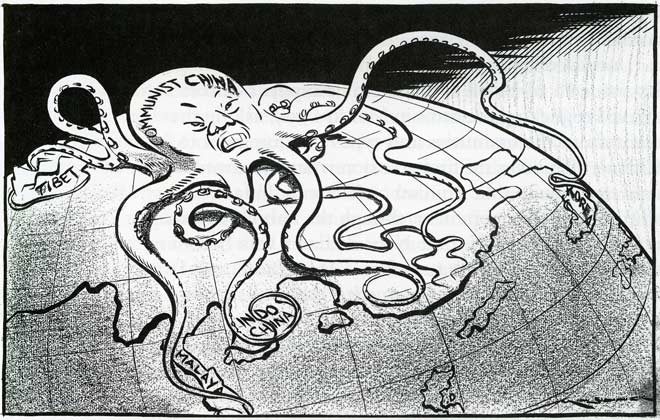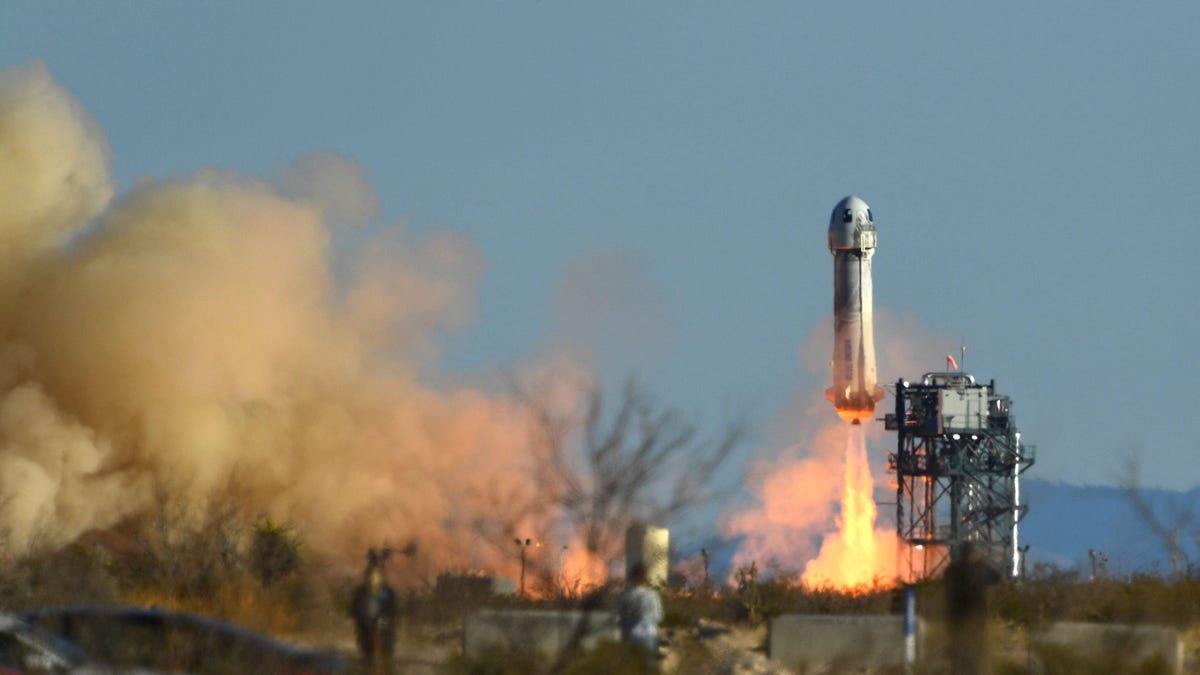U.S.-China Relations: A Breakdown And The Looming Threat Of A New Cold War

Table of Contents
Historical Context of U.S.-China Relations
The evolution of U.S.-China relations has been a rollercoaster of cooperation and conflict. From the post-World War II era of mistrust and ideological division, the relationship has undergone dramatic shifts. The establishment of diplomatic relations in 1979 marked a turning point, ushering in an era of increasing economic interdependence and technological exchange.
- Establishment of diplomatic relations (1979): This pivotal moment normalized relations, opening doors for trade and cultural exchange.
- Periods of economic interdependence and technological exchange: The subsequent decades witnessed substantial growth in bilateral trade, with China becoming a major manufacturing hub and the U.S. a key consumer market. This economic intertwining fostered a period of relative stability.
- Growing trade disputes and accusations of unfair practices: However, this interdependence also created friction. Accusations of intellectual property theft, unfair trade practices, and concerns over China's state-sponsored industrial policies led to increasing tensions.
- The rise of China as a global power: China's economic growth propelled its rise as a global superpower, challenging the established U.S.-led international order. This shift in power dynamics significantly impacted the relationship.
- Increased military spending and territorial disputes in the South China Sea: China's significant military buildup and assertive actions in the South China Sea, along with its claims in the Taiwan Strait, further exacerbated tensions.
Economic Competition and Trade Wars
The economic competition between the U.S. and China has intensified significantly, culminating in a series of trade wars. Tariffs imposed by both countries have disrupted global supply chains and impacted businesses and consumers worldwide.
- The impact of tariffs on American consumers and businesses: Tariffs on Chinese goods led to increased prices for American consumers and impacted the competitiveness of some U.S. businesses.
- China's strategies for technological advancement and economic dominance: China's ambitious "Made in China 2025" initiative, aimed at technological self-reliance and global dominance in key sectors, is a major source of concern for the U.S.
- The role of the World Trade Organization (WTO) in resolving trade disputes: The WTO has played a limited role in resolving these disputes, highlighting the need for a reformed multilateral trading system.
- The implications for global supply chains: The trade war exposed vulnerabilities in global supply chains, prompting calls for diversification and "reshoring" of manufacturing.
- The decoupling of US and Chinese economies: There is a growing push for "decoupling" – reducing economic interdependence – between the two nations, potentially leading to significant global economic restructuring.
Geopolitical Tensions and Military Buildup
Beyond economic competition, geopolitical tensions are escalating. The South China Sea disputes, Taiwan's status, and the growing cyber warfare capabilities of both nations pose significant risks.
- China's military modernization and expansion: China's rapid military expansion, including its development of advanced weaponry and its assertive military posture, is a key factor in the growing tensions.
- U.S. military presence in the Asia-Pacific region: The U.S. maintains a significant military presence in the Asia-Pacific region, contributing to the strategic competition with China.
- The role of alliances and partnerships in shaping regional dynamics: The U.S. relies heavily on its alliances with countries like Japan, South Korea, Australia, and the Philippines to counter China's growing influence.
- Concerns about nuclear proliferation and regional stability: China's nuclear arsenal adds another layer of complexity to the geopolitical dynamics, raising concerns about regional stability and the potential for escalation.
- Cybersecurity threats and espionage: Cyber warfare and espionage activities by both countries have raised significant concerns about national security and data protection.
Ideological Differences and Human Rights Concerns
Fundamental differences in political systems and human rights records further strain U.S.-China relations. China's authoritarian system contrasts sharply with the U.S.'s democratic values.
- China's human rights record and its impact on international relations: China's human rights record, particularly concerning Xinjiang, Tibet, and Hong Kong, has drawn international criticism and negatively impacts its international standing.
- Differences in governance models and political ideologies: The contrasting political ideologies of the two countries shape their approaches to international relations and cooperation.
- Freedom of speech, press, and religion in both countries: Significant discrepancies exist in the levels of freedom of speech, press, and religion enjoyed in both countries.
- The role of international organizations in addressing human rights concerns: International organizations struggle to effectively address human rights concerns in China, highlighting limitations in the current international system.
- The impact of differing values on diplomatic relations: Differences in values and norms often hinder cooperation and understanding between the two nations.
The Potential for a New Cold War
The accumulating tensions raise serious concerns about the possibility of a new Cold War. While not a direct comparison to the original Cold War, the current dynamics share some concerning similarities.
- Comparison with the original Cold War and its dynamics: The current rivalry echoes some aspects of the original Cold War, such as ideological competition, arms races, and geopolitical maneuvering.
- Potential for proxy conflicts and regional instability: The risk of proxy conflicts and regional instability increases as tensions escalate.
- The role of technology and information warfare: Technological competition and information warfare are crucial elements in the current dynamic, unlike the original Cold War.
- The potential for miscalculation and escalation: The potential for miscalculation and accidental escalation is a significant concern, given the military capabilities of both nations.
- The impact on global peace and security: The ongoing tension between the U.S. and China poses a significant threat to global peace and security.
Conclusion
The complex relationship between the U.S. and China is characterized by both intense competition and necessary cooperation. Understanding the historical context, economic rivalries, geopolitical tensions, and ideological differences is crucial to navigating this critical relationship. The potential for a new Cold War is a serious concern requiring careful diplomatic engagement and strategic planning. Ignoring the challenges of U.S.-China relations is not an option; proactive and nuanced strategies are vital to mitigate risks and build a more stable and prosperous future for all. To stay informed on the latest developments in U.S.-China relations, continue researching and engaging with credible news sources. Understanding the complexities of U.S.-China relations is crucial in these turbulent times.

Featured Posts
-
 Bezos Blue Origin Vs Katy Perrys Career Comparing Public Perception Of Failure
Apr 22, 2025
Bezos Blue Origin Vs Katy Perrys Career Comparing Public Perception Of Failure
Apr 22, 2025 -
 Fighting Resumes In Ukraine Following Putins Easter Truce
Apr 22, 2025
Fighting Resumes In Ukraine Following Putins Easter Truce
Apr 22, 2025 -
 Hollywood Production Halted The Joint Writers And Actors Strike
Apr 22, 2025
Hollywood Production Halted The Joint Writers And Actors Strike
Apr 22, 2025 -
 Sweden And Finland Complementary Military Assets In A Pan Nordic Defense Strategy
Apr 22, 2025
Sweden And Finland Complementary Military Assets In A Pan Nordic Defense Strategy
Apr 22, 2025 -
 Ftc To Appeal Microsoft Activision Merger Ruling
Apr 22, 2025
Ftc To Appeal Microsoft Activision Merger Ruling
Apr 22, 2025
Latest Posts
-
 Fan Made Henry Cavill Cyclops Trailer Generates Buzz Online
May 12, 2025
Fan Made Henry Cavill Cyclops Trailer Generates Buzz Online
May 12, 2025 -
 Viral Video A Fan Made Henry Cavill Cyclops Trailer
May 12, 2025
Viral Video A Fan Made Henry Cavill Cyclops Trailer
May 12, 2025 -
 Bayerns Triumph Championship Secured Muller Bids Farewell At Allianz Arena
May 12, 2025
Bayerns Triumph Championship Secured Muller Bids Farewell At Allianz Arena
May 12, 2025 -
 Saisonende Bundesliga Abstieg Fuer Bochum Und Kiel Leipzig Enttaeuscht
May 12, 2025
Saisonende Bundesliga Abstieg Fuer Bochum Und Kiel Leipzig Enttaeuscht
May 12, 2025 -
 Bayern Munichs Final Home Win Mullers Farewell And Championship Celebration
May 12, 2025
Bayern Munichs Final Home Win Mullers Farewell And Championship Celebration
May 12, 2025
